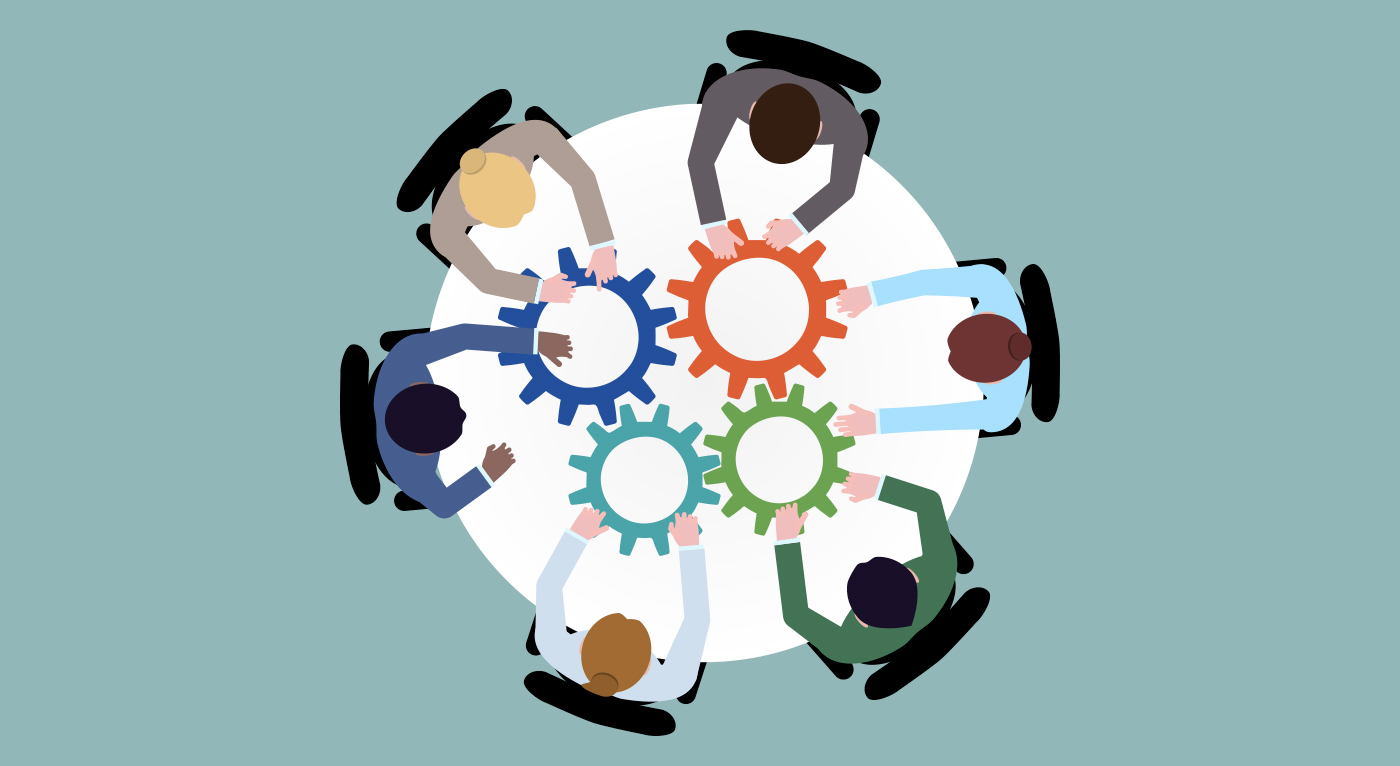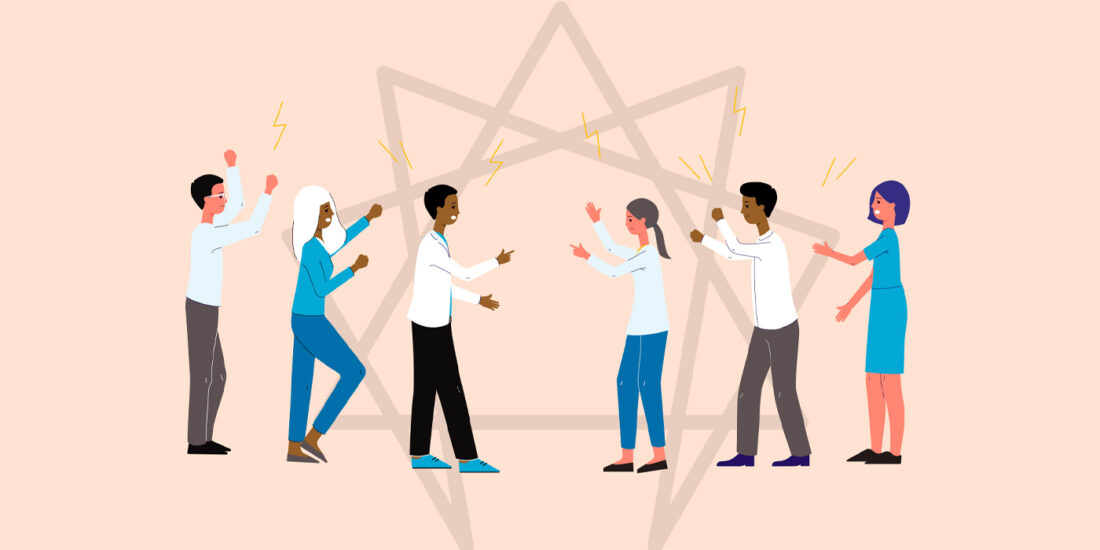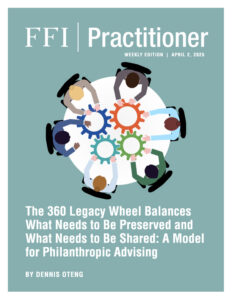
View this edition in our enhanced digital edition format with supporting visual insight and information.
Thank you to Dennis Oteng, member of the 2025 Conference Program Committee, for this article about the 360 Legacy Wheel, a model that can help client families consider which resources to share outside of the family and which to protect within the family.
Family philanthropy and its benefits have long been appreciated by family enterprise advisors, since philanthropy has advantages ranging from establishment of credibility with stakeholders and the community to the reduction of tax liabilities. Advisors assisting their client families to navigate the advantages of family philanthropy can help their clients focus on balancing what should be kept in the family and what needs to go out to the community. This article explores the 360 Legacy Wheel as a tool that assists in determining which assets to share and which to preserve.
The 360 Legacy Wheel
The 360 Legacy Wheel model was adapted from the work of FFI Fellow Dennis Jaffe. In his work, The Six Dimensions of Wealth: Leaving the Fullest Value of Your Wealth to Your Heirs,1 he classifies wealth into six types of capital: spiritual, social, human, family, structural, and financial. In the 360 Legacy Wheel, the author uses Jaffe’s six capitals of wealth, repurposed as the six dimensions of a legacy.
One strength of a 360-degree approach is that it theoretically leaves no blind spot. Use of the 360 Legacy Wheel can encourage multi-generational family enterprises to consider all six aspects of their wealth and ensure a lasting legacy. For instance, if the family enterprise builds financial wealth without making the effort to build a spiritual capital, the outcome may be chaotic. Or imagine the downside if families try to build family legacy without human capital. An often-repeated quotation, frequently attributed to Dr. Leo Buscaglia,2 is “Love is always open arms. If you close your arms about love, you will find that you are left holding only yourself.” One way that wealthy families express care or love to society is to “open their arms,” i.e., share their resources. At times, they also need to “close their arms”—keep those resources within the family—to ensure the sustainability of the enterprise.
Open Arms Dimension
In the 360 Legacy Wheel model, the six capitals of wealth are grouped into two overarching dimensions: the Open Arms Dimension and the Closed Arms Dimension (see Figure 1).
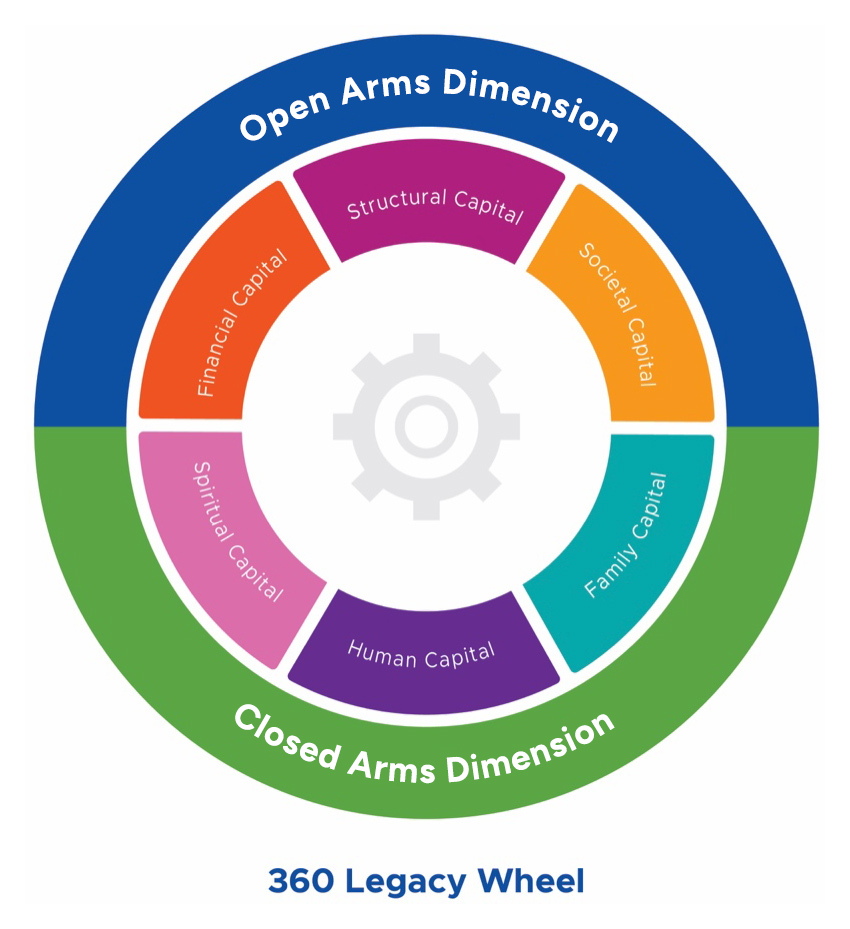
Figure 1
The open arms dimension refers to the external relationships and resources that a family enterprise engages to create impact. These include connections with the community, partnerships with other businesses, and collaborations with organizations that align with family values. By leveraging these external relationships, families can enhance their influence, extend their reach, and contribute to societal causes. This impact can manifest itself in various ways, such as supporting local charities, participating in community development projects, or advocating for social change. The open arms dimension enables families not only to benefit from their networks but also to contribute meaningfully to the broader community.
Investment in Time and Energy
The open arms dimension requires families to invest time, effort, and energy in engaging with the outside world, necessitating proactive outreach, networking, and collaboration. To build sustainable partnerships, families members may be expected to participate in events, engage in discussions, and seek out opportunities to connect with others. This effort can be demanding but is essential for maximizing the potential of the open arms dimension. The energy exerted in cultivating these relationships often leads to valuable opportunities, insights, and partnerships that benefit both the family and the business.
The open arms dimension is vital for families to navigate and thrive in an increasingly interconnected world. Engaging with individuals and organizations outside the family allows for the exchange of ideas, knowledge, and resources. This interaction is crucial for staying informed about industry trends, market dynamics, and potential opportunities for growth. Additionally, these external relationships can provide support and guidance, helping families adapt to challenges and changes in the business landscape. Ultimately, the open arms dimension fosters a sense of belonging within a larger community, enhancing the family’s reputation and influence.
Engaging a Family Enterprise Advisor
To maximize the potential of the open arms dimension, families can benefit from bringing in external expertise. Hiring consultants, advisors, or mentors can provide valuable insights and guidance that may not be available within the family itself. These experts can offer fresh perspectives, industry knowledge, and specialized skills that can enhance the family’s business operations and strategic planning. Collaborating with outside professionals can also help the family navigate complex challenges, implement best practices, and drive innovation.
By understanding their potential influence, investing time, and leveraging external expertise, families can strengthen their open arms dimension and ensure they are making decisions that align with their goals. By understanding and effectively utilizing the open arms dimension, families can create a robust network of relationships and resources that enhance their overall capital, foster growth, and enable them to make a meaningful impact in their communities.
Closed Arms Dimension
The closed arms dimension refers to the intangible resources that a family can tap into for support and growth as well as strength and energy. This dimension includes emotional support, shared experiences, and collective knowledge. When family members work together, they can leverage their unique strengths and talents, enhancing the overall resilience of the family enterprise. This synergy creates a supportive environment where family members feel empowered to take risks and innovate, leading to greater success and fulfillment.
The closed arms dimension also acts as an energy saver by providing a foundation of trust and understanding among family members. Positive and thoughtful family dynamics reduce the emotional and psychological energy required to navigate conflicts or challenges. Instead of expending energy on disputes or misunderstandings, family members can focus on collaboration and problem-solving. This efficiency allows the family to channel its efforts toward productive activities that drive the business forward.
Maintaining the closed arms dimension within the family is crucial for sustaining various forms of family capital. By prioritizing family unity and involvement, families can ensure that shared values, traditions, and knowledge are passed down through generations. Keeping this dimension within the family helps foster a sense of belonging and identity, strengthening the family’s commitment to business and the family legacy. The closed arms dimension creates a supportive network that can be relied upon during tough times, reinforcing the family’s overall stability and success.
Intentionality
The effectiveness of the closed arms dimension is largely determined by the family’s conscious efforts to cultivate and nurture relationships. These efforts require intentional actions, such as regular communication, collaborative decision-making, and collective goal setting. Families must actively work to build trust, encourage open dialogue, and support one another’s growth. Without intentionality, these dimensions may weaken over time, leading to misunderstandings or a lack of cohesion. Therefore, family members should recognize the importance of their contributions and strive to create a nurturing environment that enhances their capital.
By understanding these points and implementing change, families can strengthen their closed arms dimensions, leading to a more resilient and thriving family business.
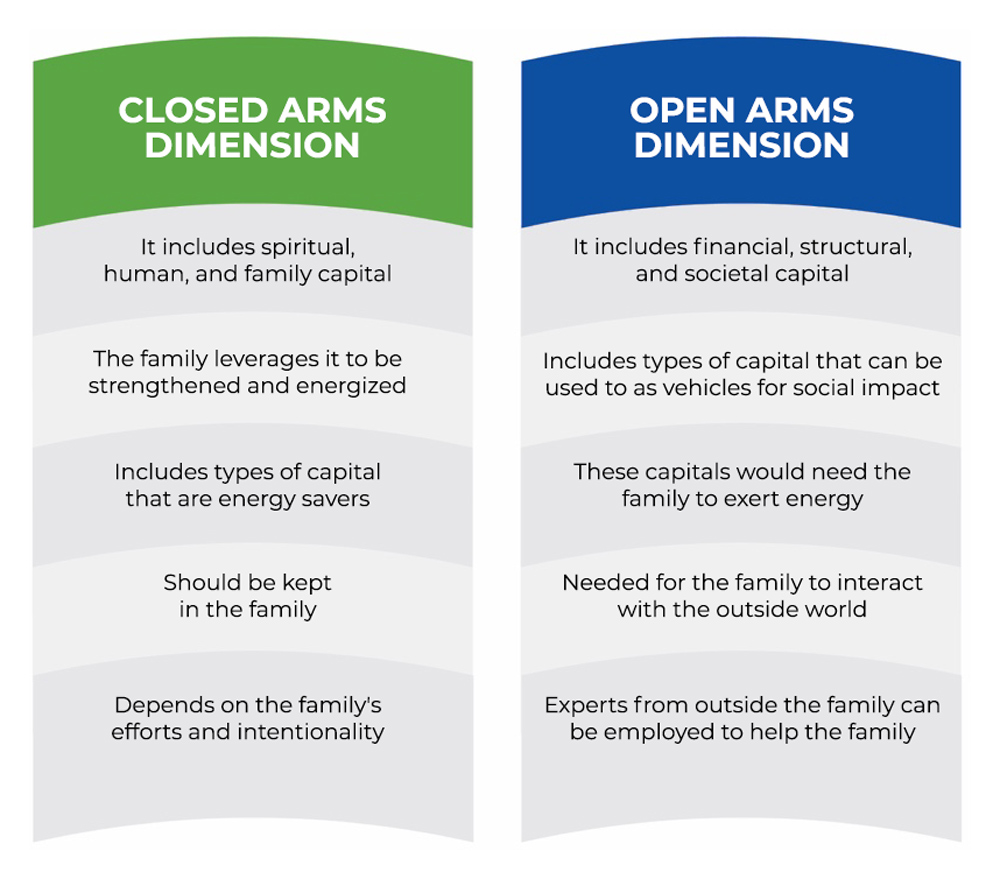
Figure 2 The Two Dimensions of Business Family Legacy
Conclusion
In conclusion, multi-generational family enterprises, whether with an operating business, a family office, or holding companies of wealth, may find many opportunities in philanthropy and its concomitant structures. The 360 Family Legacy Wheel model can assist these enterprises and their families as they explore ways that they can impact people around them without damaging family harmony and relationships—balancing sources of capital that can are developed inside and outside the family and its enterprise.
References
1 Jaffe, Dennis T. (2003). “Six Dimensions of Wealth: Leaving the Fullest Value of Your Wealth to Your Heirs.” Journal of Financial Planning 16, no. 4 (2003): 74–79. https://dennisjaffe.com/download/six-dimensions-of-wealth-leaving-the-fullest-value-of-your-wealth-to-your-heirs/
2 Leo Buscaglia. “About Dr. Buscaglia.” Accessed February 24, 2025. https://www.buscaglia.com/about-dr-buscaglia/.
About the Contributor

Dennis Oteng, ACFBA/ACFWA, is the CEO of Venture Raven, a family business consulting firm in Ghana. He is the host of the Africa Family Business Summit (AFBS) and is on the 2025 FFI Conference Program Committee. He can be reached at dennis@ravens-consulting.com.

View this edition in our enhanced digital edition format with supporting visual insight and information.


